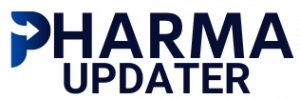In the manufacturing of pharmaceuticals, the sampling process is based on techniques and processes that are used to collect samples of various ingredients at various processing stages in accordance with cGMP norms and, when necessary, BAM (Bacteriological Analytical Methods) specifications.
In this post, we’ll discuss sampling techniques that apply to pharmaceuticals that aren’t sterile. We will go over several sample strategies, specifications, and methods frequently utilised for non-sterile pharmaceutical items. Those in the pharmaceutical sector who are responsible for sampling will find this topic useful.
Clause 6.11 of the PIC/S cGMP guidelines states that “The sample shall be done in accordance with written procedures that have been authorised and specify:
– The method of sampling
– The necessary equipment
– The amount of the sample to be taken
– The labelling of tested containers
– Any extra safety measures that must be taken, especially when sampling toxic or sterile items.
– The storage circumstances
– Directions on how to store and clean sampling equipment.
Also, according to the PIC/S cGMP rule, sample containers must have labels that list their contents, the batch number, the date of sampling, and the containers from which samples were taken.
